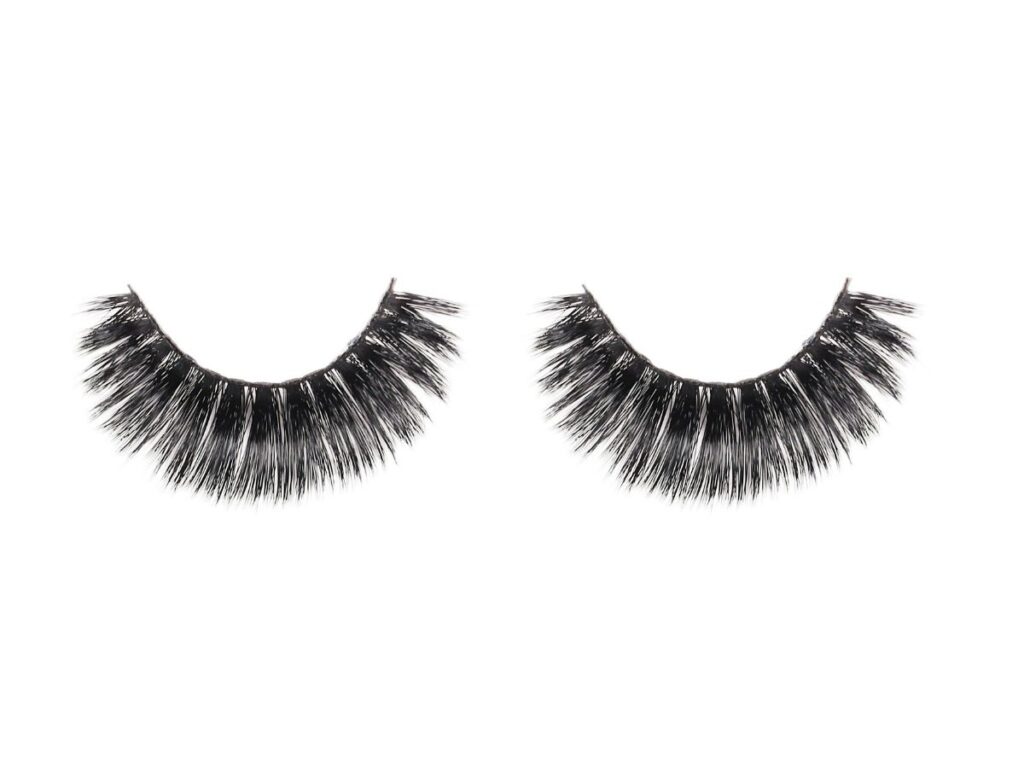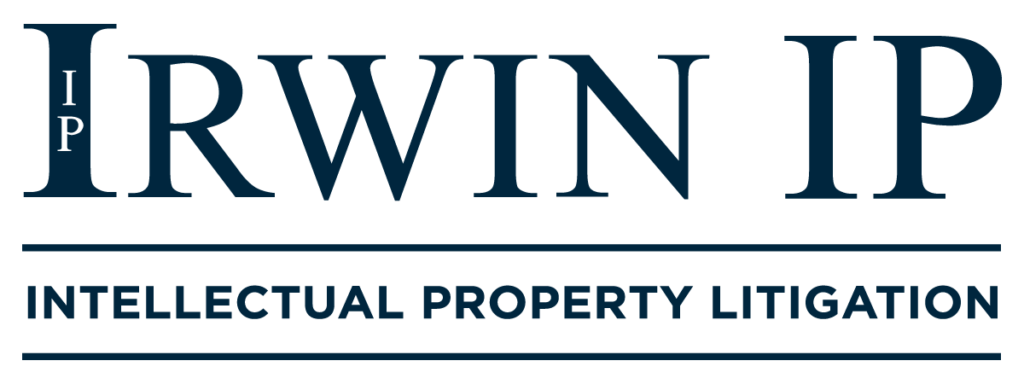After Novartis’ patent on the blockbuster blood pressure medication Entresto was found invalid at the district court for covering technology that was developed after the patent was filed, the Federal Circuit reversed that decision. The Federal Circuit explained that while the later-arising technology fell within the claims of the patent for purposes of infringement, that does not mean that the patent must provide adequate written support for that later discovered technology.
Generic drug manufacturers sought approval to sell a generic version of Entresto, which in 2023 alone, had sales in the United States totaling more than $3 billion. In response, Novartis asserted infringement of its Entresto patent against these manufacturers. Novartis’ patent claims compositions comprising two different drugs used “in combination”. Both Entresto and the generic manufacturers’ products include a compound of the two different drugs mixed together as a “complex”, where such complexes were not known at the time of the filing of the patent.
The district court, construing “in combination” to have its plain and ordinary meaning, found that such complexes fell within the claims of Novartis’ patent. The district court, however, found that because these complexes were not described in the specification, Novartis’ patent was invalid for failing to provide an adequate written description. The district court reasoned it would be impossible for the inventors to have had possession, i.e., satisfy the written description requirements, for technology that had not yet been invented.

The Federal Circuit reversed finding sufficient written description. The Federal Circuit explained that the written description requirement pertains only to the claims themselves and the construction thereof. As neither the claims nor the claim construction mentioned complexes, no written description support for complexes was required, merely support for a “combination,” which was present. It is improper to require that a patent must support, through its written description, potentially infringing products that are covered by the claims but not explicitly called out by either the claim language or their constructions. The District Court improperly “conflated the distinct issues of patentability and infringement, which let it astray in evaluating written description.
Potential defendants beware. Whereas previously a company might have thought that using new technology would avoid infringement of an older patent, that is not always the case. A patent can cover technology that was developed after the patent was filed.
The Hatch-Waxman Act seeks to strike a balance in the pharmaceutical industry by incentivizing drugs makers to develop innovative drugs with additional patent protections while also providing shortened regulatory review procedures for generic drug manufacturers to rapidly get generic versions of the patented name-brand drugs to market after the expiration of the patents. The additional patent protections Hatch-Waxman provides includes patent term extensions (“PTEs”) of up to five years if FDA review of a new brand-name drug extends beyond the issuance of a patent covering the drug. A patent’s term generally lasts 20 years from the date it is filed. But, as the FDA’s review of a drug can take years, Hatch-Waxman seeks to compensate the patent owners of new drugs for the lost time on the market after (1) the patent had issued (2) but while the drugs were still held up in regulatory review.

Last week, the Federal Circuit affirmed, in a precedential opinion, a District Court’s finding that PTEs add up to five years of additional protection onto the original patent’s issue date, even if that patent is reissued at a later date. A patent owner may file for a reissue patent to correct errors in the original patent. A reissue renders the original patent “dead.” Here, Merck filed a patent (“the ’340 patent”) on “sugammadex,” which issued on December 30, 2003, and was set to expire on January 27, 2021. On April 13, 2004, Merck applied for FDA approval of sugammadex. While the FDA approval was pending, Merck filed for a reissue, in 2012, for the ’340 patent to add narrower claims, and the reissue patent issued on January 28, 2014. The FDA cleared sugammadex on December 15, 2015, which meant that Merck “could not market sugammadex for nearly twelve years of the ’340 patent’s original term.” Under these facts, Aurobindo (generic manufacturer) argued that instead of the maximum 5-year PTE resulting from the period between December of 2003 (original issuance) to December 2015 (FDA approval), Merck should have only been entitled to a PTE between January 2014 (reissue issuance) and December 2015 (FDA approval). The Federal Circuit declined to accept Aurobindo’s argument. The Federal Circuit reasoned that adopting the generic manufacturers’ interpretation would undermine the Act’s purpose by denying full compensation for the regulatory delay.
Again, Hatch-Waxman seeks to balance the interests of the name-brand drug and the generic drug manufacturers. The Federal Circuit’s holding finds that pharmaceutical patentees are free to file reissue applications to correct errors without concern that their patent terms may be shortened. On the other hand, as the Federal Circuit noted, pharmaceutical patent challengers should be aware of the “difficult questions” that arise out of this holding: to the extent that a reissue patent “corrects” its claims to encompass a drug that was not previously covered by the patent, the pharmaceutical patent holders could feasibly extend protections on a certain drug by incorporating it in a reissued patent. This opens a potential loophole if the reissued patent covers a different drug than the original patent because patentees can seek PTE for the reissue patent, even if FDA did not delay the release of the drug covered by the reissue. However, the Federal Circuit did not confront these difficult questions, as Merck’s reissue had narrower claims.
The Federal Circuit’s en banc decision in LKQ Corp. v. GM Global Tech., in which LKQ was represented by Irwin IP, marks a major shift in design patent law by overturning the rigid Rosen-Durling test for obviousness. This article analyzes the court’s adoption of the Graham factors, its impact on the assessment of analogous art, and the broader implications for design patent prosecution and enforcement.

On February 6, 2025, the Second Circuit held that the “articulation requirement” for a trade dress complaint—a pleading requirement under which plaintiffs must articulate with precision the components making up their claimed trade dress—is independent of and must be satisfied prior to evaluating the elements of trade dress infringement (distinctiveness, likelihood of confusion, and non-functionality). The court found that the district judge erred when it dismissed Cardinal’s Third Amended Complaint (“TAC”) for failing to precisely articulate the distinctiveness of its trade dress.
Plaintiff-Appellant Cardinal Motors designs motorcycle helmets and licensed “The Bullitt” to Bell Sports, Inc.—one of the largest manufacturers of motorcycle helmets—and Bell marketed it as its flagship motorcycle helmet. Subsequently, H&H Sport Protection USA began selling a motorcycle helmet called the “Torc T-1.”
On September 24, 2020, Cardinal filed a lawsuit against H&H alleging trade dress infringement and unfair competition of its “The Bullitt” helmet. After having two complaints dismissed without prejudice for failure to satisfy the pleading requirements for its trade dress claims, Cardinal’s TAC presented two alternative articulations of its trade dress, a “General Trade Dress” and a “Detailed Trade Dress,” and advanced separate trade dress infringement counts based on each. H&H again moved to dismiss. The district court found that Cardinal’s description failed to satisfy the articulation requirement because it “failed to allege the distinctiveness” of the trade dress and dismissed the claim relying on the General Trade Dress without determining whether Cardinal had plausibly alleged the elements of trade dress infringement. It summarily concluded that the count relying on the Detailed Trade Dress also failed the articulation requirement “for the same reasons” because it rested “in substantial part on the General Trade Dress,” and dismissed the remaining state law count for lack of jurisdiction. Cardinal appealed.
The Second Circuit found that the district court erred by conflating the articulation requirement with the distinctiveness element of Cardinal’s trade dress claim, which instead focuses on whether the trade dress has inherent or acquired distinctiveness. The court admitted that the Second Circuit and district courts within the circuit had likewise improperly conflated the requirement. The court noted that other Circuits delineate the articulation requirement from the elements and made clear that the Second Circuit was adopting that same approach, stating: “Whether, once a plaintiff has met the articulation requirement, it has sufficiently pleaded the three elements of an infringement cause of action – distinctiveness, likelihood of confusion, and nonfunctionality – is a different question.” As such, a court must decide if a party has explained what the features of the trade dress are before it determines whether that trade dress has inherent or acquired distinctiveness and whether it meets the other trade dress infringement elements.
This decision clarifies that the trade dress must be articulated first before determining the distinctiveness of the trade dress. This decision provides guidance that trade dress should be articulated with specificity as to features, but that pleading distinctiveness does not have this specificity requirement.
On February 26, 2025, the United States Supreme Court unanimously overturned a $43 million damages award arising out of a trademark infringement lawsuit. The Court held that when awarding the “defendant’s profits” to the plaintiff under 15 U.S.C. § 1117(a) of the Lanham Act, the plaintiffs are entitled only to the profits of the named defendant and cannot include the profits of non-party affiliates, even if those affiliates are under common ownership.

The case began in 2007 when Dewberry Engineers (the “Engineers”), a real estate development firm, filed suit against Dewberry Group (the “Group”), a commercial real estate company, for trademark infringement of its mark “Dewberry.” The case ultimately settled, leading to the Group being prohibited from using the “Dewberry” mark. However, around a decade later in 2017, the Group resumed using “Dewberry” in its business dealings with affiliates. The Engineers again sued the Group for trademark infringement, unfair competition and breach of contract. Importantly, the Group’s affiliates were not named as parties to the litigation. The District Court found the Group liable on all counts, issued a scathing opinion stating the Group’s actions were “intentional, willful, and in bad faith,” and awarded the Engineers $43 million in damages. A divided Court of Appeals for the Fourth Circuit affirmed the award reiterating the “economic reality” of the Group’s relationship with its affiliates, stating that it agreed with the District Court’s treatment of all the companies “as a single corporate entity.” The Group then petitioned for certiorari, which was granted.
On appeal, the Engineers admitted that it did not make a case for piercing the corporate veil, thus the principles of corporate separateness remained. However, in an attempt to justify the lower courts damages award, the Engineers argued that the so called just-sum provision of § 1117(a) permits a court, after assessing the “defendant’s profits,” to determine a different figure that reflects the “defendants true financial gain.” On the other hand, the Group argued that there was no basis for the lower courts to disregard the corporate form and separateness between it and its affiliates when calculating profit disgorgement. The Supreme Court agreed.
In vacating and remanding the Fourth Circuit’s decision, the Supreme Court highlighted the significance of maintaining corporate separateness. In authoring the unanimous opinion of the Court, Justice Elena Kagan explained that the Lanham Act’s provision for recovering “defendant’s profits” applies solely to the profits of the defendant named in the lawsuit. Justice Kagan noted that the Lanham Act does not offer a special definition of the term “defendant,” so the term retains its usual legal meaning. Thus, including profits from non-party affiliates would ignore the well-established distinctions between separate corporate entities, which the law does not allow. On remand, a new damages award proceeding will be held in according with the Supreme Court’s opinion, focusing on the Group as the sole defendant.
The Supreme Court’s decision serves as a critical reminder of the importance of corporate formalities and the limits of legal remedies in trademark disputes. Plaintiffs seeking disgorgement of profits under the Lanham Act must include all relevant parties in their lawsuits.

On March 5, 2025, the Federal Circuit vacated the International Trade Commission (“ITC”)’s decision and exercised its “independent judgment” based on the Supreme Court’s Loper Bright decision, which overturned Chevron, to evaluate the ITC’s long-standing practice of narrowly interpreting the domestic industry requirement of Section 337 of the Tariff Act of 1930 to require domestic manufacturing activities in order for a company to receive protection through the ITC. In particular, the Federal Circuit ruled that the ITC improperly analyzed the economic prong of the domestic industry requirement when the ITC held that investments in “labor or capital for sales, marketing, warehousing, quality control, and distribution,” alone were insufficient to establish the domestic industry requirement. This decision opens the door for companies who manufacture overseas but have significant U.S. sales and marketing operations to seek injunctive relief from the ITC for patent disputes.
Section 337 (19 U.S.C. § 1337) empowers the ITC to investigate and take action against unfair trade practices in the importation of goods in the U.S and to grant relief as a way to protect U.S. industries. To qualify for a Section 337 ITC proceeding, a complainant must demonstrate the existence of a “domestic industry” via domestic investments that are protected by an asserted patent. The economic prong of the domestic industry requirement—i.e., domestic investments of “significant investment in plant and equipment,” “significant employment of labor or capital,” or “substantial investment in exploitation of the patent though activities such as engineering, research and development, or licensing”—was at issue for Lashify’s utility patent and its two design patents. 19 U.S.C. § 1337(a)(3)(A)-(C).
In 2020, Lashify, a U.S. eyelash extensions and accessories company that manufactures overseas, filed a complaint with the ITC alleging a Section 337 violation based on patent infringement by various importers. At the ITC, Lashify sought to establish a domestic industry through the labor or capital costs it had incurred in the U.S.—specifically, expenses related to sales and marketing, warehousing, distribution, and quality control activities. The ITC found that, because Lashify’s products were not made in the U.S. and Lashify’s labor and capital expenditures were typical of a “mere importer,” Lashify had failed the economic prong without other qualifying investments for all three patents. Lashify appealed.
On appeal, the Federal Circuit vacated the ITC’s decision as to the economic prong for all three patents, holding that the ITC’s interpretation—that labor or expenses related to U.S. sales, marketing warehousing, quality control, and distribution did not count towards the domestic industry requirement in absence of domestic manufacturing—was inconsistent with the plain language of Section 337. Indeed, the Federal Circuit noted that Section 337’s “significant employment of labor or capital” did not provide restrictions on what the labor or capital was being used for. The Federal Circuit remanded the case for further consideration as to whether Lashify’s expenses were significant or substantial for the two design patents.
Although the Federal Circuit expanded the domestic industry standard, the Federal Circuit did not specify what minimum level of labor and/or capital satisfies the domestic industry requirement. As such, the threshold level of labor and/or capital required to establish domestic industry, for now, remains a mystery.
